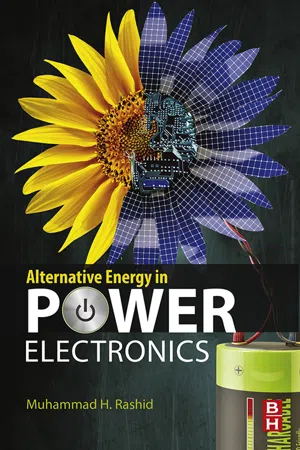
- 378 pages
- English
- ePUB (mobile friendly)
- Available on iOS & Android
Alternative Energy in Power Electronics
About This Book
This new resource is a practical overview of designing, testing and troubleshooting power electronics in alternative energy systems, providing you with the most important information on how power electronics components such as inverters, controllers and batteries can play a pivotal role in the successful implementation of green energy solutions for both stand-alone and grid-connected applications. You will learn how to choose the right components for diverse systems, from utility-scale wind farms to photovoltaic panels on single residences, how to get the most out of existing systems, and how to solve the tough challenges particular to alternative energy applications. Whether you are a renewables professional who needs to understand more about how power electronics impact energy output, or a power engineer who is interested in learning what new avenues the alternative energy revolution is opening for your work, start here with advice and explanations from the experts, including equations, diagrams and tables designed to help you understand and succeed.
- Provides a thorough overview of the key technologies, methods and challenges for implementing power electronics in alternative energy systems for optimal power generation
- Includes hard-to-find information on how to apply converters, inverters, batteries, controllers and more for stand-alone and grid-connected systems
- Covers wind and solar applications, as well as ocean and geothermal energy, hybrid systems and fuel cells
Frequently asked questions
Information
Power Electronics for Renewable Energy Sources
Abstract
1.1 Introduction
Table of contents
- Cover image
- Title page
- Table of Contents
- Copyright
- Contributors
- Preface
- Chapter 1: Power Electronics for Renewable Energy Sources
- Chapter 2: Energy Sources
- Chapter 3: Photovoltaic System Conversion
- Chapter 4: Wind Turbine Applications
- Chapter 5: High-Frequency-Link Power-Conversion Systems for Next-Generation Smart and Micro Grid
- Chapter 6: Energy Storage
- Chapter 7: Electric Power Transmission
- Index